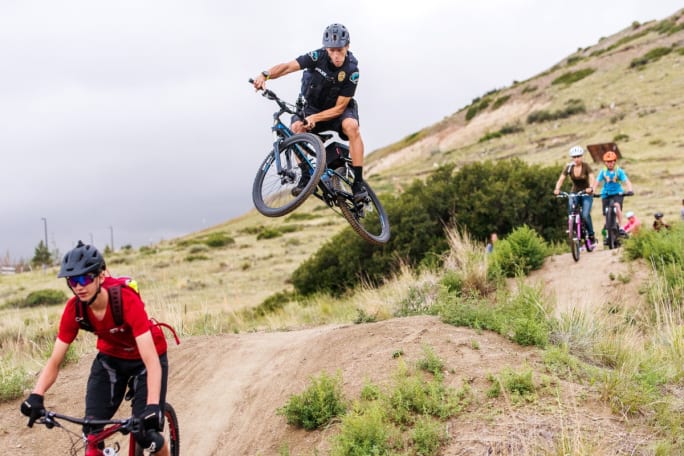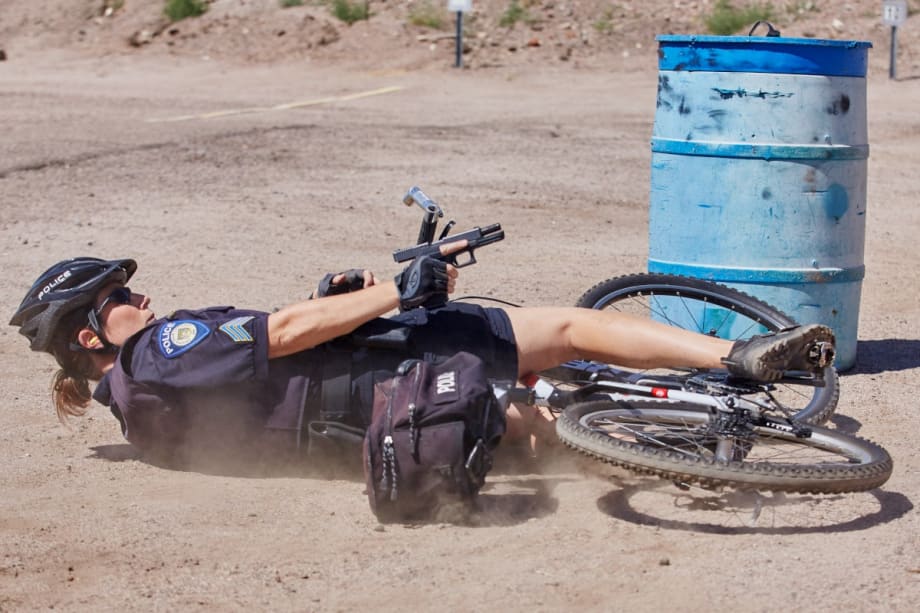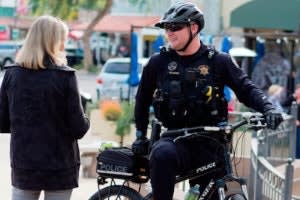3. Engage in Regular In-Service Training
Bike skills are perishable. They can and will deteriorate if not routinely practiced. Even if you operate a bicycle on duty regularly, IPMBA recommends quarterly in-service training, which can include skill development, firearms, scenarios,
mission-specific operations
, etc. Make sure your
training
is “Three-R”: recent, realistic, and relevant. Continued in-service training is needed to maintain and expand your knowledge, skills, and abilities.
4. Know Your Limitations
Know your riding capabilities. When on patrol, ride within your limits. On patrol is not the time to conquer a new obstacle in an unfamiliar area while responding to a call. If unsure of your ability to overcome an obstacle, go around, dismount and carry, or slow down. A broken bike or a broken officer is no good to the person who needs your assistance.
5. Become More Proficient with Your Sidearm
Set higher standards than your department’s qualification standard and seek out bicycle-specific firearms training.
During training
, wear your full-duty bike uniform, footwear, duty gear, and personal protective equipment (gloves, helmet, eyewear, and ballistic vest) as they will affect your technique and accuracy. Practice exertion drills and dynamic dismounts before firing. And
practice
at greater distances. On a bike, you are more exposed, and not having access to a long rifle means you need to be better with your sidearm.
6. Communicate Early and Often
Even in an era of GPS and other tracking devices, you must always remain aware of your location and communicate it to other officers and dispatchers. Because bicycles can go places inaccessible to standard patrol vehicles, it may be difficult for your backup to locate you. Prior to any enforcement action or contact, relay your position using both street names and landmarks. If you ride with a partner, pre-determine who will serve as contact and cover, and develop a system of verbal and non-verbal signals.














